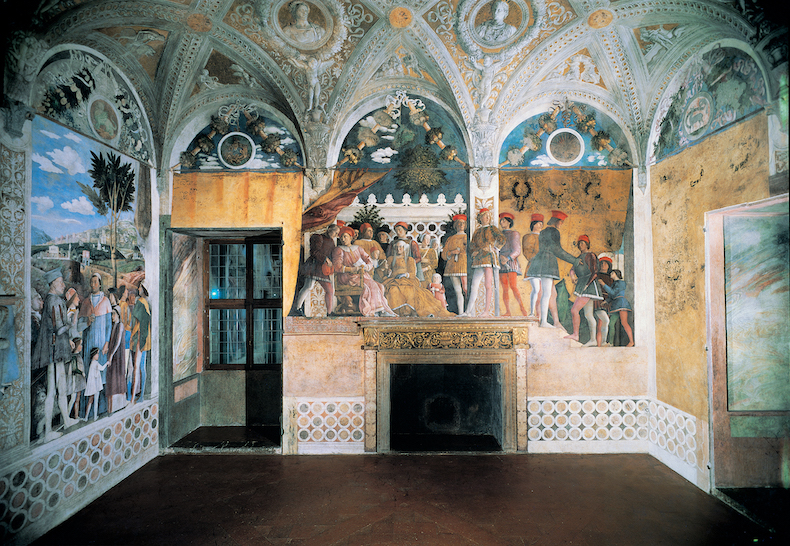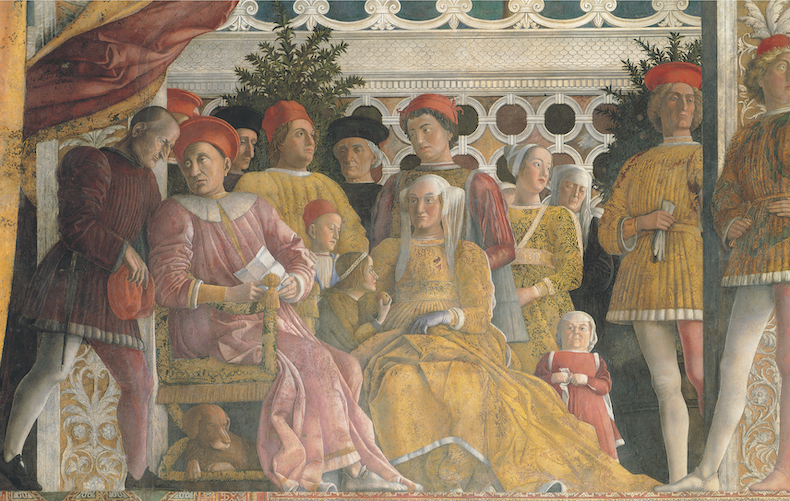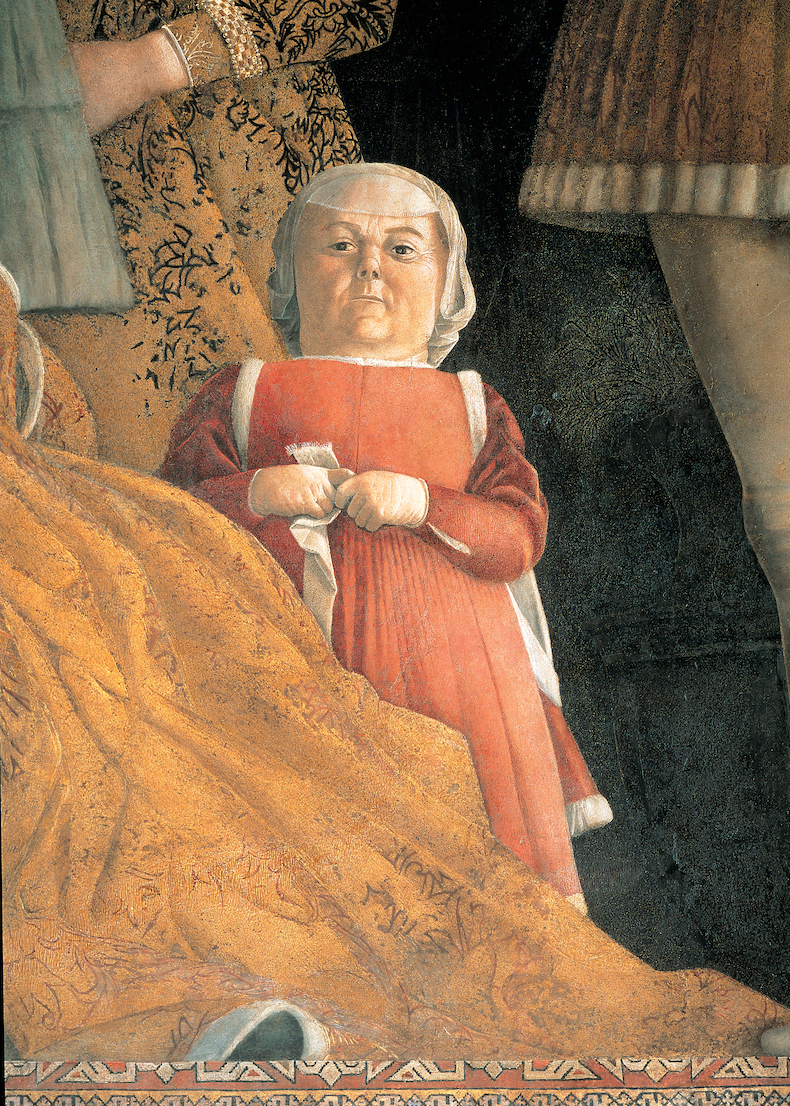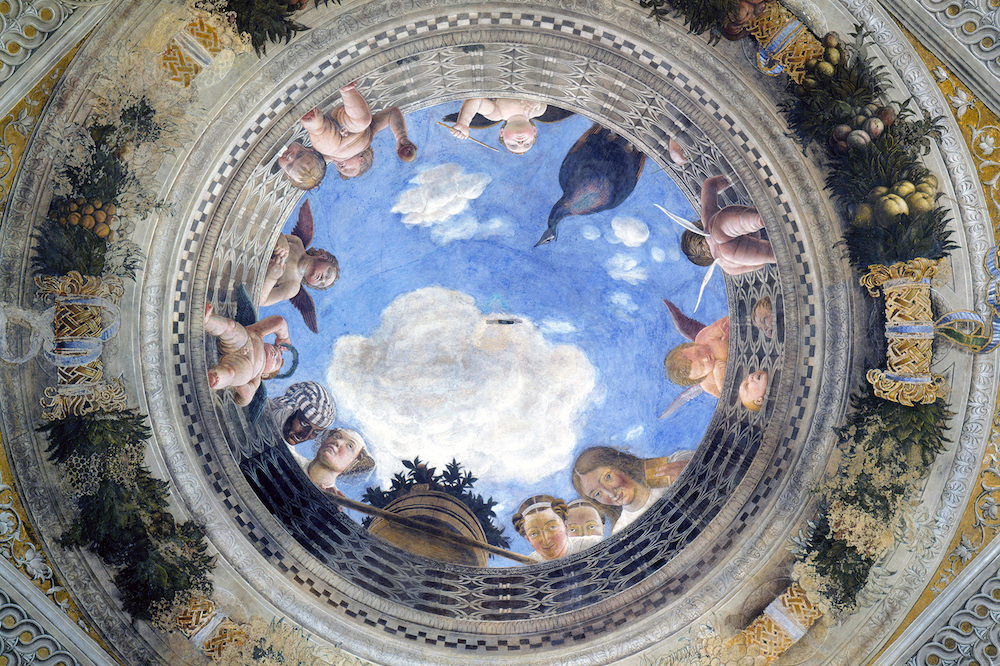In our world of artist-celebrities, it is easy to imagine that Renaissance painters were admired wherever they went. Who wouldn’t have wanted to meet a genius like Mantegna, now rightly celebrated for his unusual compositions and innovative use of perspective? Yet in Inger Christensen’s experimental novel The Painted Room, the painter’s ‘arrogance, brutality and [appetite] for novelty’ are seen by some as producing nothing but ‘artistic abominations’: a reminder that Mantegna’s work must have looked quite strange to contemporaries, and just one of the ways in which the Danish writer subtly undermines Renaissance myths about great art and artists. First published in 1976 and translated into English by Denise Newman in 2000, The Painted Room has been reissued by New Directions. The novel is inspired by Mantegna’s Camera degli Sposi, a frescoed room created for Ludovico Gonzaga in the Ducal Palace of Mantua (1465–74). It weaves three interlocking narratives around the room’s enigmatic images, in a beautiful meditation on the possibility – and limits – of immortality achieved through art.
The Camera degli Sposi, Mantua, painted by Andrea Mantegna in 1465–74. Photo: Mondadori Portfolio via Getty Images

Mantegna modelled the Camera degli Sposi on a classical pavilion: two of the walls depict meeting scenes, filled with members of the Gonzaga court, while the other two are seemingly veiled with painted brocade curtains. Most famous is the illusionistic ceiling; painted di sotto in sù (literally ‘from below upward’), it offers a worm’s eye view of a group of figures, standing around a central oculus, who seem about to tip a potted plant onto the visitor’s head. Taking a lesson from Mantegna, Christensen’s novel offers unexpected angles on the figures of the Mantuan court. In Part I, we eavesdrop on the fictional diary of Marsilio Andraesi, Ludovico’s long-suffering secretary, as he attempts to dissuade his patron from inviting Mantegna to Mantua. When the artist finally arrives, Andraesi paints an unflattering view of the swaggering Mantegna, but we soon learn that he has other reasons for hating the artist, namely his love of Mantegna’s wife (Mantegna had married Nicolosia Bellini, sister of Giovanni and Gentile, in 1453). As the years pass and Nicolosia’s tragic death binds them closer together, Andraesi is won over by Mantegna’s talent and force of personality.
Detail of the ‘court scene’, comprising members of the Gonzaga family and attendants, on the north wall of the Camera degli Sposi, Mantua, by Andrea Mantegna in 1465–74. Photo: Mondadori Portfolio via Getty Images

In the novel’s second section, the focus turns to Nana, the name Christensen gives to the unidentified dwarf (nana in Italian) who stands by Ludovico and his wife Barbara in the fresco known as the ‘court scene’. Christensen imagines Nana as the daughter of Ludovico and Barbara. Married off quietly to the gardener’s son, she is visited by three mysterious women in white (resembling the three maids painted in the Camera’s oculus) who assure her she is destined for great things. A bizarre narrative treating superstition, bigamy and unwitting incest follows, centring on the oculus’s painted peacock and incorporating the cherubs and other figures from the frescoes. Filling in the courtiers’ backstories, the section riffs on Pope Pius II’s erotic novel The Tale of Two Lovers (a real work, written in 1444), and subtly illuminates the events of Part I.
Detail of the ‘court scene’ on the north wall of the Camera degli Sposi, Mantua, by Andrea Mantegna 1465–74. Photo: Mondadori Portfolio via Getty Images

In the final section, Christensen imagines a school project, ‘My Summer Holiday by Bernadino, 10 years old’, from the perspective of Mantegna’s young son. Art historians often praise Mantegna for his seeming ability fully to inhabit the paintings he created, and to invite the viewer inside. The effect is literal in the case of the Camera degli Sposi, where the frescoes totally envelop the visitor in an immersive experience of the Mantuan court. Bernadino, however, imagines journeying into the landscape on the west wall; here he meets Hercules (in reality painted in the vault of the Camera as a trompe l’oeil relief carving), and attends a party in honour of Orpheus, whose rescue mission to the Land of the Dead, contrary to myth, has been successful.
A running theme of the book is art’s ability to resurrect, to confer a kind of immortality. As the Renaissance art theorist Leon Battista Alberti (also a character in the novel) put it: ‘through painting, the faces of the dead go on living’. What claim can the artist themselves lay to this prolongation of life? And what kind of life is it really? In The Painted Room, these questions haunt the portraits in the frescoes, which can never compensate for death, and might even anticipate it. Imagining himself inside the painting on the west wall, Bernadino recognises Orpheus as his father; when Mantegna as Orpheus brings his dead wife ‘back to the world’ with his art, she is still only a picture, and Bernadino rightly asks, ‘which world?’. In the end, portraits are just ‘ghosts’, and ‘like all great ghosts in Art’, they ‘calmly and tirelessly wait for their living models to die’. To have a portrait painted is to have ‘entered into a relationship with Death’.
Like the three figured surfaces in the Camera degli Sposi, each part of The Painted Room offers a different view of the Mantuan court’s characters and their actions, building up to a multifaceted and playful reworking of the scenes recorded in the frescoes. In some sense the novel is about this act of distortion – a fitting theme for a book inspired by Mantegna, famous for his startling foreshortenings and perspectival games, and for Christensen, whose interest in mathematics and systemic structures dictated several of her other published works. But seen another way, the three-part novel is a mirror of the fresco process: the ground colour provided by Andraesi’s diary in Part I is given depth and highlights by Parts II and III. Together they create a brief but rounded glimpse into a court and a culture where art, mathematics and history were consciously united.
The Painted Room by Inger Christensen (translated from Danish by Denise Newman) is published by New Directions.



